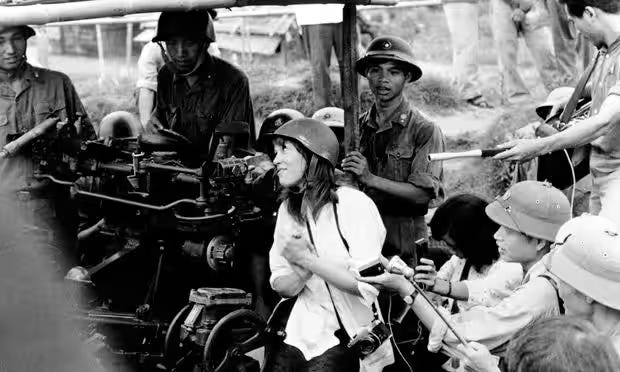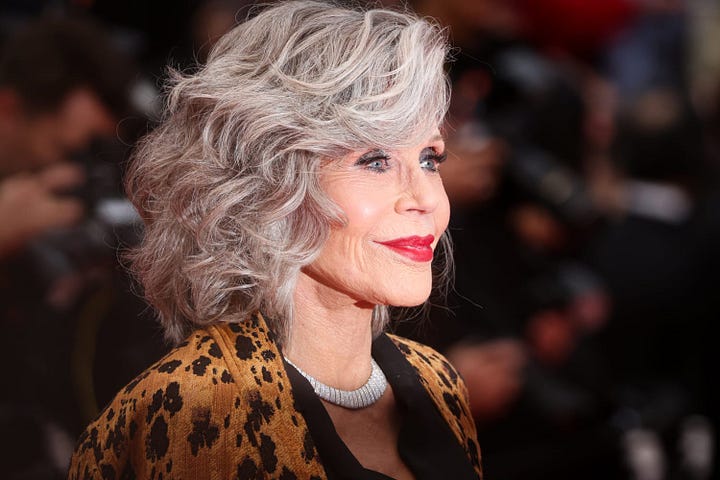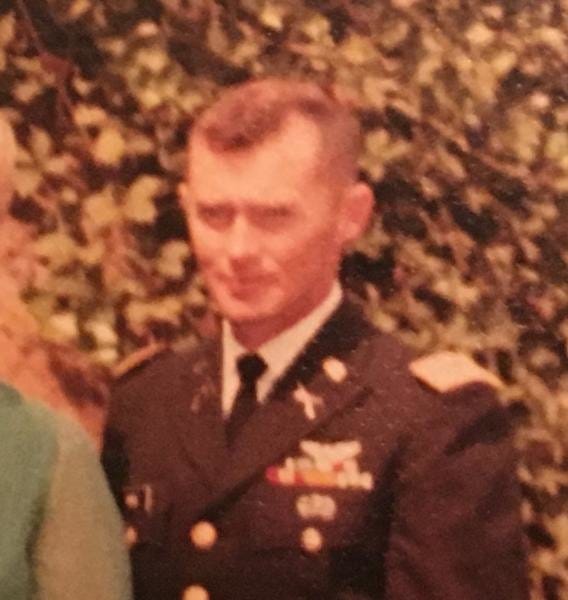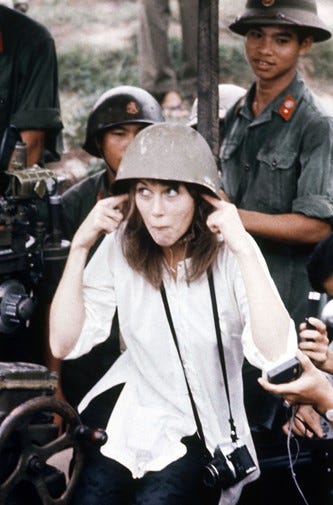Los Angeles County Officially Celebrates an American Traitor's Contribution to the Communist Defeat of South Vietnam.
"Treason against the United States, shall consist only in levying War against them, or in adhering to their Enemies, giving them Aid and Comfort." U.S. Constitution, Art. III, Section 3, Clause 1.
A study in contrasts
Then and Now


Then only. Now not available.





The most despised actors on the Vietnam stage
In my experience, there are two Americans, whom most Vietnam veterans regard as the most deserving of utter contempt, if not downright hatred, for their role in connection with the Vietnam war. They are LBJ’s Secretary of Defense, Robert McNamara and Jane Fonda.
McNamara earned his well-deserved high standing in any Vietnam veteran’s list of despicable Americans because of his, incompetent micro-management of that war at the highest levels, combined with his egotistical refusal to accept professional military advice.
Hanoi Jane and Los Angeles’ Resolution of support for an American Traitor
Jane Fonda earned her place in the Pantheon of American traitors by giving aid and comfort to the enemy while our men were still fighting and dying, and while prisoners of war in the infamous Hanoi Hilton were routinely tortured to force them to meet with visiting American propagandists such as Jane Fonda, Former U.S. Attorney General Ramsey Clark, and other fellow travelers. Despite that record, the Los Angeles County Board of Supervisors passed a resolution proclaiming “April 30 of each year as Jane Fonda Day.”
Most Vietnam veterans’ views of Fonda were summed up by James Webb, former Secretary of the Navy and holder of the Navy Cross, when he was being interviewed on a radio talk show. The interviewer mentioned that Fonda was in town and asked Webb if he would like to meet her. Webb’s response to the chance to meet a beautiful celebrity movie star? “Jane Fonda can kiss my ass. I wouldn’t go across the street to watch her slit her wrist.”
Before considering the Los Angeles Resolution further, it is useful to consider just what Fonda did that has caused her to be held in such contempt by veterans and by a large swath of the general public as well. It is important to do this in some detail, since a majority of adults today were either not born or not old enough to be aware of international events 54 years ago in 1972. So, read on, especially you younger folks and others who may not know the full extent of how Fonda became so widely despised and today remains, “Hanoi Jane.”
Fonda’s 1972 trip to support North Vietnam’s war efforts
In 1972 Fonda made a highly publicized two-week trip to North Vietnam. During the entire trip she was an enthusiastic supporter of the North Vietnamese war effort and was gleefully critical of her own country. It was a propaganda bonanza for the North Vietnamese.
A great deal has been written about Fonda’s 1972 trip, but two studies stand out. Both document in detail her activities in North Vietnam. One is a 2010 Research Paper prepared by Elizabeth Meredith of the National Geospatial-Intelligence Agency, for the Air Command and Staff College Air University, JANE FONDA: Repercussions of her 1972 Visit to North Vietnam. The other is a 400+ page study of the air war in North Vietnam by Wayne Thompson, published in 2000 for the United States Air Force History and Museums Program, To Hanoi and Back The United States Air Force and North Vietnam 1966–1973.
Drawing from interviews and written accounts by returned POWs as well as other official reports, both of these papers document in detail Fonda’s activities in adhering to our enemies’ cause and giving them aid and comfort, including her lies about the torture and other brutal treatment of the POWs by their North Vietnamese captors.
Prisoners were routinely tortured to extract phony confessons, leaving many with permanent injuries, most famously, perhaps, being John McCain.
Prisoners also were tortured to force them to meet with Fonda and others of her ilk, and to hew to the party line during their interviews with her, under pain of more torture if they did not obey. The account of Navy Captain David Hoffman, who was shot down in 1971, is typical of these:
“The torture resulted in a permanent injury that plagues me to this day. When Jane Fonda turned up, she asked that some of us come out and talk with her. No one wanted to. The guards got very upset, because they sensed the propaganda value of a famous American war protestor proving how well they were treating us. A couple of guards came to my cell and ordered me out. I resisted, and they got violently angry. My arm had been broken when I was shot down, and the Vietnamese broke it second time. It had not healed well, and they knew it caused me great pain. They twisted it. Excruciating pain ripped through my body. Still, I resisted, and they got more violent, hitting me and shouting, “You must go!‟ …. I was dragged out to see Fonda. I decided to play the role. I knew if I didn’t, not only would I suffer - but the other guys would be tortured or beaten or worse.”
After these sessions Fonda talked about how humanely the North Vietnamese treated the prisoners, and how inhumane the U.S. was. According to her the prisoners appeared to be well-cared for and were even treated to art classes.
During her two-week visit, she toured multiple sites and made repeated anti-American statements at every opportunity all across North Vietnam.
She gave multiple interviews with Radio Hanoi and the infamous “Hanoi Hannah.” The New York Times reported that her interview with her co-propogandist was vile enough to be “heard with anger” by pilots and soldiers in Vietnam. Some of her anti-American propaganda broadcasts on Radio Hanoi can be heard here.
She repeatedly attacked the American prisoners in her radio broadcasts and other public statements, calling them “liars” for claiming that the Vietnamese had a policy of torture.
She made a radio broadcast falsely telling American pilots that the alleged bombing of a hospital had killed doctors and patients, that this was purposeful and intentional, and pleading with the pilots to disobey their orders.
In her broadcasts targeting American troops Fonda described the North Vietnamese as her “friends,” whereas the American prisoners were “immoral,” “imperialist air raiders,” “murderers,” “war criminals,” and “pawns.”
When not attacking prisoners, her statements to their captors were consistently critical of American policy and supportive of the Communists.
When faced with increasing accounts of torture after the POWs’ return in 1973, she doubled down, saying “We have no reason to believe that U.S. Air Force officers tell the truth. They are professional killers.”1
Jane Fonda, antiaircraft gunner
Perhaps the most famous incident of Fonda’s her trip occurred when she posed for pictures in the gunner’s seat of an antiaircraft gun, laughing and clapping while pretending to aim through the gunsight at planes piloted by the American “pirates.”
If you only watch one video today, watch this one of Fonda palling around with her North Vietnamese “Friends,” filming them as they pretend to track and shoot down an American plane, and then gleefully laughing and clapping as she occupies the gunner’s seat (You may have to double-click to get it going).
Fonda’s excuses for her behavior
In 2011, Fonda wrote a blog that attempted to excuse her behavior. In it, she claimed that she “cared deeply for the men and boys who had been put in harm’s way” and that “my heart has always been with the soldiers.” She was just trying to help the soldiers, you see.
Hogwash. Fonda’s true motivation can be gauged from comments she made at Duke University, and it had nothing to do with caring for soldiers in harm’s way: “I am a Socialist, I think we should strive toward a socialist society – all the way to communism. I would think that if you understood what communism was, you would hope, you would pray on your knees that we would someday become Communist.”2
She also claimed that “torture stopped late in 1969, two and a half years before I got there.” The discussion and sources cited above should be enough to dispel that lie, but not only did torture continue after 1969, but men were even tortured to force them to cooperate with Fonda’s “interviews” of them.
Consider just Air Force Colonel James Edwin Ray, who was a prisoner of war for almost seven years, after his plane was shot down in 1966. He was awarded the Silver Star for “gallantry and intrepidity” in his resistance while he was a POW. He has personally refuted Fonda’s claim that no one was tortured after 1969 or when Fonda was there. In 1999 he wrote to the Ladies Home Journal to protest its decision to honor Fonda as one of the supposedly 100 greatest women of the last 100 years. Colonel Ray personally confirmed then that “POWs were abused and forced to attend a press conference with her and were punished badly for not following the communist script.”
Colonel Ray also pointed out that Fonda personally said “that she'd like to get a Yankee mercenary air pirate (an American pilot) in her sights (to shoot him down or kill him!)” He added that “[h]er actions prolonged the war and caused many additional casualties (on both sides) by giving aid, comfort, and encouragement to the enemy.” So much for her professed love of those in harm’s way.
Fonda excuses her antiaircraft gun pantomime by claiming exhaustion and youthful naivete (my comments in bold and bracketed]: “Here is my best, honest recollection of what happened: someone (I don’t remember who) led me towards the gun, and I sat down, still laughing, still applauding. [What was so funny and worthy of applause? Shooting down American planes? The thought that maybe these very gunners had killed American pilots? Yuk. Yuk.] It all had nothing to do with where I was sitting. [This makes no sense. What did it have “to do with” if not her sitting in the gunner’s seat of an antiaircraft gun?] I hardly even thought about where I was sitting. The cameras flashed. I got up, and as I started to walk back to the car with the translator, the implication of what had just happened hit me. “Oh my God. It’s going to look like I was trying to shoot down U.S. planes.” I pleaded with him, “You have to be sure those photographs are not published. Please, you can’t let them be published.” I was assured it would be taken care of. I didn’t know what else to do. (I didn’t know yet that among the photographers there were some Japanese.)
“It is possible that it was a set up, that the Vietnamese had it all planned. I will never know. [So, 39 years after the event, she still doesn’t know if the Vietnamese planned this photo op propaganda??!!)] But if they did I can’t blame them. The buck stops here. If I was used [“If” ??], I allowed it to happen. It was my mistake and I have paid and continue to pay a heavy price for it. Had I brought a politically more experienced traveling companion with me they would have kept me from taking that terrible seat.” [A “more experienced” companion? She was 35, not 15. And she had been on the anti-war circuit for several years.]
After you read that, go back and take another look at the above video of her performance with the antiaircraft gun. Does anything in it look like a worn-out young woman who was distressed at what she had just done? You be the judge.
Back to the Los Angeles County Resolution
Ignoring her history of literally giving aid and comfort to our enemy while our troops were still at war, the Los Angeles County Board of Supervisors passed Resolution declaring April 30 of each year3 to be Jane Fonda Day. Its Resolution says, “Throughout her illustrious career spanning decades, Jane Fonda has not only captivated audiences with her performances on screen but has also fearlessly championed causes that promote environmental sustainability, gender equality, and social justice…. Beyond her contributions to the entertainment industry, Jane Fonda is equally renowned for her activism. The roots of Jane Fonda's advocacy can be traced back to Santa Monica, where she became heavily involved in community activism and social justice causes. Inspired by her experiences during the Vietnam war era, Jane Fonda became an outspoken advocate for peace and social justice. Her courageous efforts to raise awareness about the plight of veterans and victims of war have showcased her unwavering commitment to humanitarian causes.”
You can see that the only mention of Fonda’s “activism,” is of her “experiences during the Vietnam War” is that they “inspired” her to become an “advocate for peace and social justice.” What do they say about elephants in living rooms? There is no mention of her support for the North Vietnamese Army, her denigration of our service members, her play-acting role as antiaircraft gunner or her general role as a supporter or our enemies while they were still killing our troops. But never mind, she is getting a day named after her, so all is OK.
In her presentation of the Resolution to Fonda, the chairwoman, Commissioner Lindsay Horvath, provided a sanitized version of Fonda’s anti-war anti-American activities, in her presenting comments. According to a Beverly Hills/West Hollywood outlet, Horvath said, “Jane Fonda’s activism knows no bounds.” Well, Horvath was right about that. Fonda didn’t draw a boundary line at “giving aid and comfort” to the enemy, also known as treason.
What effect did Fonda have?
So, how do we gauge the effect or results of Fonda’s perfidy? I will leave aside her effect on the morale of the POWs and other U.S. troops. Instead, I will let the Vietnamese speak to their view of her role and its effect: Colonel Bui Tin, who was the commander of the tank column that breached the gate of the South Vietnamese Presidential Palace in 1975, signaling the fall of Saigon, had this to say:
“The antiwar movement was essential to our strategy. Every day our leadership would listen to world news over the radio to follow the growth of the American antiwar movement. Visits to Hanoi by people like Jane Fonda gave us confidence that we should hold on in the face of battlefield reversals.”4
Q.E.D.
“Prove It, Jane Fonda Says of POW Torture,” Los Angeles Times (1886-Current File), April 19, 1973; ProQuest Historical News Papers Los Angeles Times (1881-1986), 25. Documented by Elizabeth Meredith.
Allan H. Ryskind, Human Events, Washington: Apr 18, 2005. Vol. 61, Iss. 14,1-2, ProQuest Newspapers, Research Library. Documented by Elizabeth Meredith.
April 30 is the anniversary date of the fall of South Vietnam. The Commission may have been clueless about the tone-deafness of passing its Resolution on that day. In any event, after massive push-back from the Vietnamese community, they said that they would move to change future Jane Fonda Days to coincide with Earth Day on April 8. California has the largest Vietnamese population outside of Vietnam.
H-Net Discussion Networks – Reply: Cross-Posted Review, Humanities and Social Sciences Online, Michigan State University, http://h-net.msu.edu. Documented by Elizabeth Meredith.








In 71 I was stationed at Ft Sam. The FTA Show (need I define that?) came to San Antonio. I attended out of curiosity. I recall Donald Sutherland, Eliot Gould and Jane Fonda being the primary actors. It was stupid. Junior high level stuff. Lots attended. I did not get the sense they succeeded by any measure. I was a Pvt 1st class draftee then. I've considered her an idiot ever since. In retrospect, the FedGov should have taken action against her but she was a consequence of war fighting without a declaration of war. At least she knows that she's universally loathed by vets and most other Americans. She's getting rewarded in the blue bubble the the rest of us know the score. Excellent post! Most Americans are unaware of this history these days. Good to remind us all.
45-50 years ago the author sent me a car bumper sticker that I have treasured all these years: "I will forgive Jane Fonda when the Jews forgive Hitler."